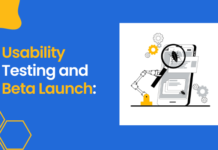In this blog, we are going to discuss transforming IT Service Management with ServiceNow. Before moving further, you can get accredited with this ServiceNow Training certification available online so as to comprehend application development’s core principles on the ServiceNow Platform, which would assist you in improving your professional career. Get this ServiceNow Training course designed by professional experts that helps you clear the certification as a Certified Implementation Specialist (CIS) for your career advancement.
The Need for Transformation in ITSM
In today’s rapidly evolving digital landscape, there is an increasing need for transformation in IT Service Management (ITSM). Traditional ITSM approaches are often characterized by siloed systems, manual processes, and fragmented data. However, with the emergence of new technologies such as artificial intelligence (AI), machine learning (ML), and automation, organizations can leverage these tools to streamline their ITSM practices and deliver enhanced services.
One of the key drivers for transforming ITSM is the growing demand for agility and responsiveness. As businesses become more reliant on technology to drive their operations, they need IT departments that can quickly adapt to changing business needs and deliver solutions at a faster pace. This requires a shift from traditional reactive approaches towards proactive problem-solving strategies that anticipate issues before they occur. By embracing digital transformation in ITSM, organizations can automate routine tasks, enable self-service capabilities for end-users, and gain real-time visibility into their service delivery processes.
Another crucial aspect of transforming ITSM is enhancing the customer experience. With today’s tech-savvy customers expecting seamless interactions across various channels, organizations must ensure that their IT services are user-friendly and accessible. By leveraging modern tools like ServiceNow’s platform, organizations can create personalized self-service portals where users can easily submit requests or report incidents. Moreover, advanced analytics capabilities enable organizations to gather insights from customer interactions and identify areas for improvement in service delivery.
Overall, the need for transformation in ITSM stems from the desire to keep up with technological advancements while meeting growing business demands.
Overview of ServiceNow’s ITSM Solution
ServiceNow’s ITSM solution is a comprehensive platform that aims to transform traditional IT service management practices. It offers a range of features and functionalities that help organizations streamline their IT operations, improve efficiency, and enhance customer satisfaction.
One key aspect of ServiceNow’s ITSM solution is its incident management capabilities. This allows organizations to effectively manage and resolve incidents, minimizing downtime and ensuring smooth business operations. The solution provides a centralized system for tracking, prioritizing, and resolving incidents in a timely manner.
Another important feature of ServiceNow’s ITSM solution is its change management functionality. This enables organizations to effectively plan, track, and implement changes to their IT infrastructure in a controlled manner. By providing an organized approach to managing changes, the solution helps minimize the risks associated with system disruptions or outages.
Overall, ServiceNow’s ITSM solution offers organizations an integrated platform for managing their IT services more efficiently. With its incident management and change management capabilities, it empowers organizations to deliver better service quality while improving overall operational efficiency.
Key Features and Benefits of ServiceNow
ServiceNow is a powerful platform that offers numerous key features and benefits for transforming IT service management. One of the key features is its intuitive user interface, which allows users to easily navigate through different modules and access the information they need. This user-friendly interface saves time and enhances productivity for both agents and end-users.
Another notable feature of ServiceNow is its automation capabilities. It provides tools for automating routine tasks, such as incident management, problem management, and change management. By automating these processes, organizations can streamline their IT service management workflows, reduce manual errors, and improve overall efficiency.
Furthermore, ServiceNow offers a comprehensive set of reporting and analytics tools. These tools allow IT teams to gather data on various aspects of their service operations, such as response times, ticket resolution rates, and customer satisfaction levels. With this information at hand, organizations can make data-driven decisions to optimize their service delivery processes and address any bottlenecks or issues proactively.
In conclusion, ServiceNow provides a range of key features that enable organizations to transform their IT service management practices. Its intuitive user interface improves usability and productivity, while its automation capabilities help streamline workflows. Additionally, its robust reporting and analytics tools provide valuable insights for making informed decisions to enhance service delivery efficiency.
Tips for a Smooth Transition to ServiceNow
- Develop a comprehensive plan: Before making the transition to ServiceNow, it is crucial to create a detailed plan that outlines your organization’s goals and objectives. This plan should include defining the scope of the implementation, identifying key stakeholders, establishing a timeline for each phase of the transition, and allocating resources accordingly. By having a well-defined plan in place, you can ensure a smooth and successful migration to ServiceNow.
- Provide adequate training: Transitioning to ServiceNow may require your IT staff to learn new processes and tools. It is essential to provide adequate training and support throughout the transition period. This can include offering workshops, online tutorials, or even bringing in external experts who are experienced with ServiceNow implementations. By investing in proper training, you can empower your team members to become proficient users of ServiceNow and maximize its potential within your organization.
- Engage with stakeholders: During the transition process, it is vital to engage with all relevant stakeholders within your organization. This includes IT teams, end-users, managers, and executives who will be impacted by the change. Communicate regularly with these stakeholders about the benefits of transitioning to ServiceNow and address any concerns or questions they may have. By involving them in decision-making processes and keeping them informed throughout the journey, you can ensure their buy-in and cooperation during this transformative period.
Potential Challenges and How to Overcome Them:
- Resistance to change: One of the biggest challenges organizations face when implementing ServiceNow is resistance from employees who are accustomed to traditional IT service management processes. To overcome this, it is crucial to communicate the benefits of the new system effectively. This can be done by highlighting how ServiceNow will streamline workflows, improve efficiency, and provide better transparency in managing IT services. Additionally, providing comprehensive training programs and support during the transition period can help employees embrace the change more readily.
- Integration complexities: Integrating ServiceNow with existing systems and applications can pose significant challenges for organizations. Since many businesses have multiple legacy systems in place, ensuring seamless integration requires careful planning and expertise. To overcome this challenge, it is important to conduct a thorough assessment of existing infrastructure and identify potential integration points early on in the implementation process. Collaborating with experienced consultants or leveraging pre-built integrations available within ServiceNow’s marketplace can also simplify the integration process and minimize disruptions during deployment.
- Data migration hurdles: Migrating data from legacy systems into ServiceNow can be a complex task that requires meticulous attention to detail. The challenge lies in ensuring data accuracy, completeness, and consistency throughout the migration process while minimizing downtime or disruptions to ongoing operations. To address this challenge effectively, organizations should establish a clear data migration strategy that includes data cleansing, mapping, and validation procedures, as well as contingency plans in case of unforeseen issues or data loss scenarios.
Conclusion: Embracing the Future of ITSM with ServiceNow
In conclusion, embracing the future of ITSM with ServiceNow is not only a smart move but also a necessary one in today’s rapidly evolving digital landscape. As organizations strive to become more agile and customer-centric, traditional ITSM approaches no longer suffice. ServiceNow provides a comprehensive platform that enables businesses to streamline their IT service delivery, automate processes, and enhance the overall user experience.
By leveraging ServiceNow’s powerful capabilities, organizations can achieve greater efficiency and productivity within their IT teams. The platform allows for seamless integration with other business systems, facilitating cross-functional collaboration and enabling real-time decision-making. Additionally, ServiceNow’s advanced analytics and reporting capabilities provide valuable insights into the performance of IT services, helping businesses identify areas for improvement and make data-driven decisions.
Embracing the future of ITSM with ServiceNow positions organizations at the forefront of technological innovation. With its continuous updates and enhancements, ServiceNow ensures that businesses stay ahead of the curve in delivering exceptional service experiences to customers while driving operational excellence internally. In this fast-paced digital era, choosing ServiceNow as an integral part of your ITSM strategy is imperative for success in today’s competitive landscape.
Author Bio: I am B. Srikanth, working as a content writer at IT Canvass. I have good experience handling technical content writing and aspire to learn new things to grow professionally. I am expert in delivering content on market demanding technologies like ServiceNow Training, SailPoint Training,ServiceNow ITOM training, etc.















